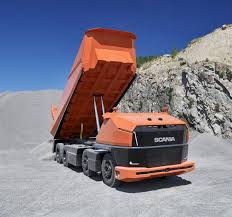
Breaking News
 2 Hours of Retro Sci-Fi Christmas Songs | Atomic-Age Christmas at a Snowy Ski Resort
2 Hours of Retro Sci-Fi Christmas Songs | Atomic-Age Christmas at a Snowy Ski Resort
 Alternative Ways to Buy Farmland
Alternative Ways to Buy Farmland
 LED lights are DEVASTATING our bodies, here's why | Redacted w Clayton Morris
LED lights are DEVASTATING our bodies, here's why | Redacted w Clayton Morris
Top Tech News
 Travel gadget promises to dry and iron your clothes – totally hands-free
Travel gadget promises to dry and iron your clothes – totally hands-free
 Perfect Aircrete, Kitchen Ingredients.
Perfect Aircrete, Kitchen Ingredients.
 Futuristic pixel-raising display lets you feel what's onscreen
Futuristic pixel-raising display lets you feel what's onscreen
 Cutting-Edge Facility Generates Pure Water and Hydrogen Fuel from Seawater for Mere Pennies
Cutting-Edge Facility Generates Pure Water and Hydrogen Fuel from Seawater for Mere Pennies
 This tiny dev board is packed with features for ambitious makers
This tiny dev board is packed with features for ambitious makers
 Scientists Discover Gel to Regrow Tooth Enamel
Scientists Discover Gel to Regrow Tooth Enamel
 Vitamin C and Dandelion Root Killing Cancer Cells -- as Former CDC Director Calls for COVID-19...
Vitamin C and Dandelion Root Killing Cancer Cells -- as Former CDC Director Calls for COVID-19...
 Galactic Brain: US firm plans space-based data centers, power grid to challenge China
Galactic Brain: US firm plans space-based data centers, power grid to challenge China
 A microbial cleanup for glyphosate just earned a patent. Here's why that matters
A microbial cleanup for glyphosate just earned a patent. Here's why that matters
 Japan Breaks Internet Speed Record with 5 Million Times Faster Data Transfer
Japan Breaks Internet Speed Record with 5 Million Times Faster Data Transfer
Meet The Futuristic, Fully-Autonomous Concept Truck Without A Cab

The vehicle is described as a "heavy-duty self-driving vehicle" and was designed by a group of Scania experts from different fields.
It features the company's modular system at the core of its design and could be used in many industries that are seeking out "more sustainable, self-driving vehicles to increase their productivity and performance."
Some examples including mining and construction, which are favorable for self-driving vehicles since they are well-controlled locations.
Scania describes the truck as "a step forward to smart transportation systems of the future". And the software in the truck will play just as big of a role as the hardware: the AXL is directed and monitored by an intelligent control environment.
In places like mines, autonomous operations can be facilitated by a logistics system that tells vehicle how it should perform.
Many self-driving autonomous trucks in use today still have a cab where a driver can sit, should the need to intervene arise. The AXL is designed without a cab, meaning no driver will be in the truck. Its combustion engine is even powered by renewable biofuel.

 $100 SILVER CONFIRMED?
$100 SILVER CONFIRMED?

